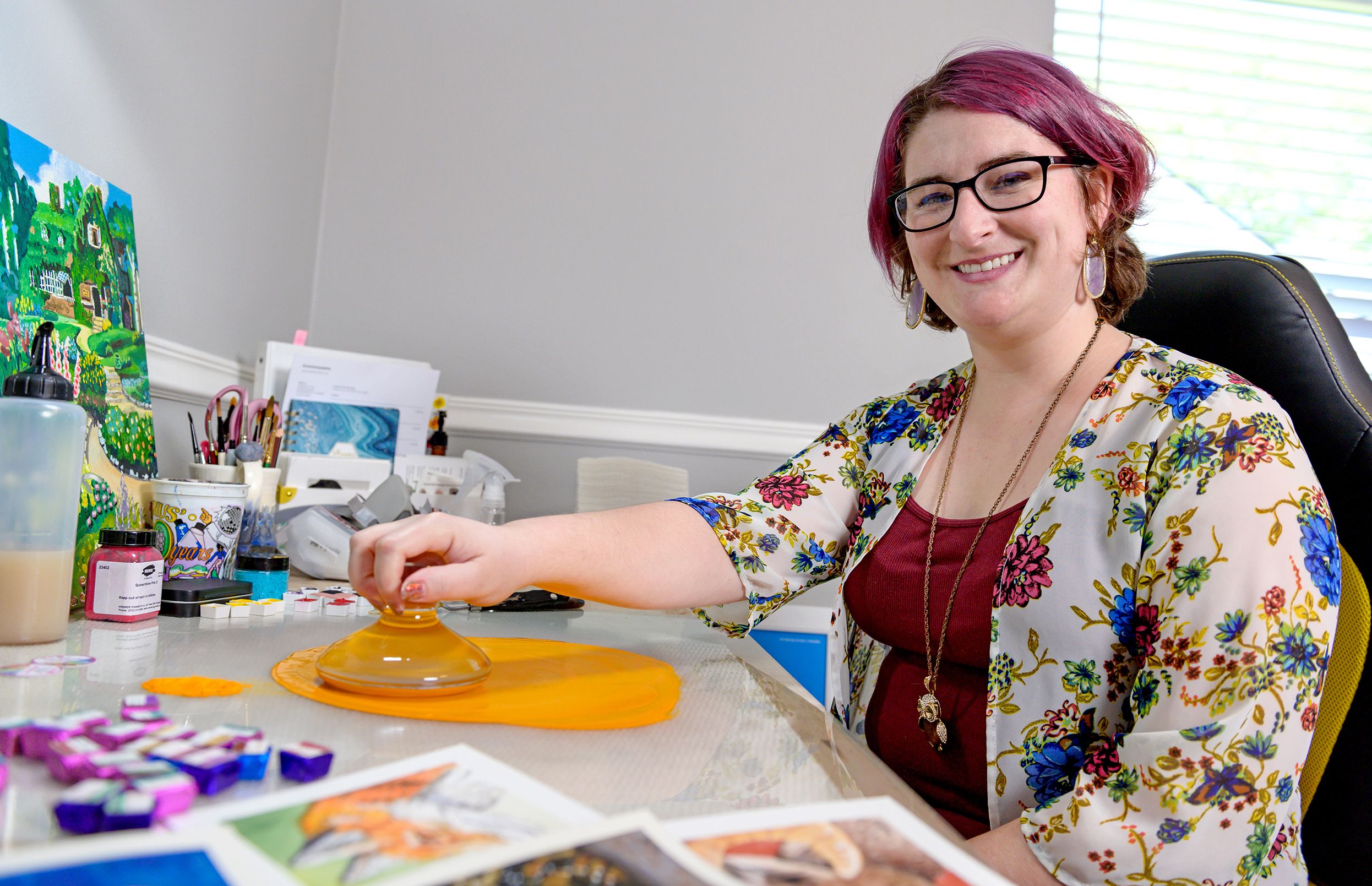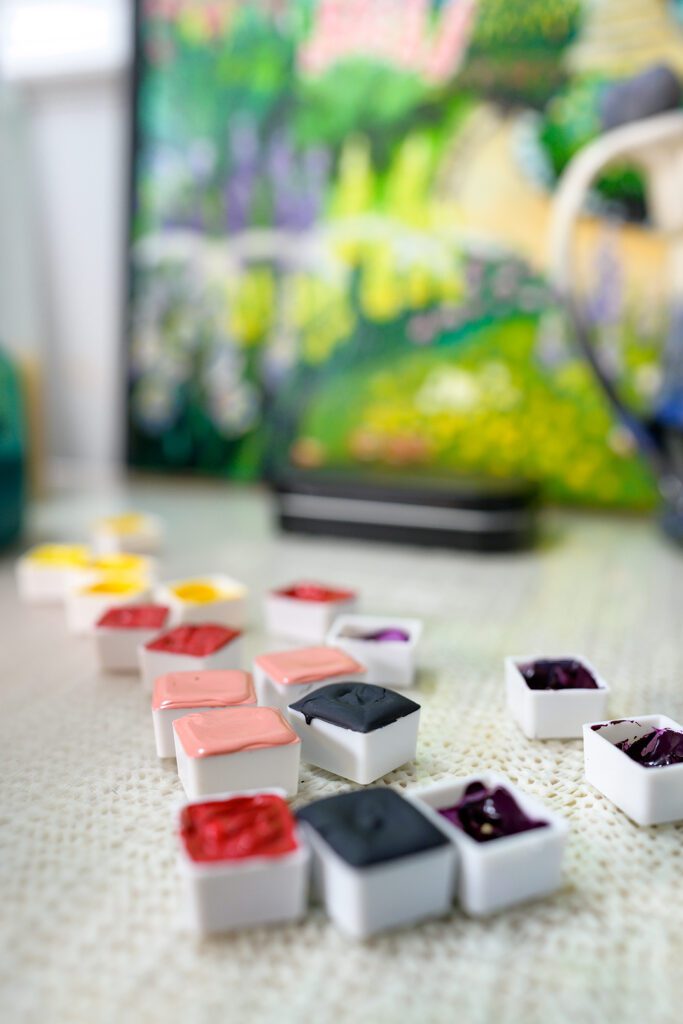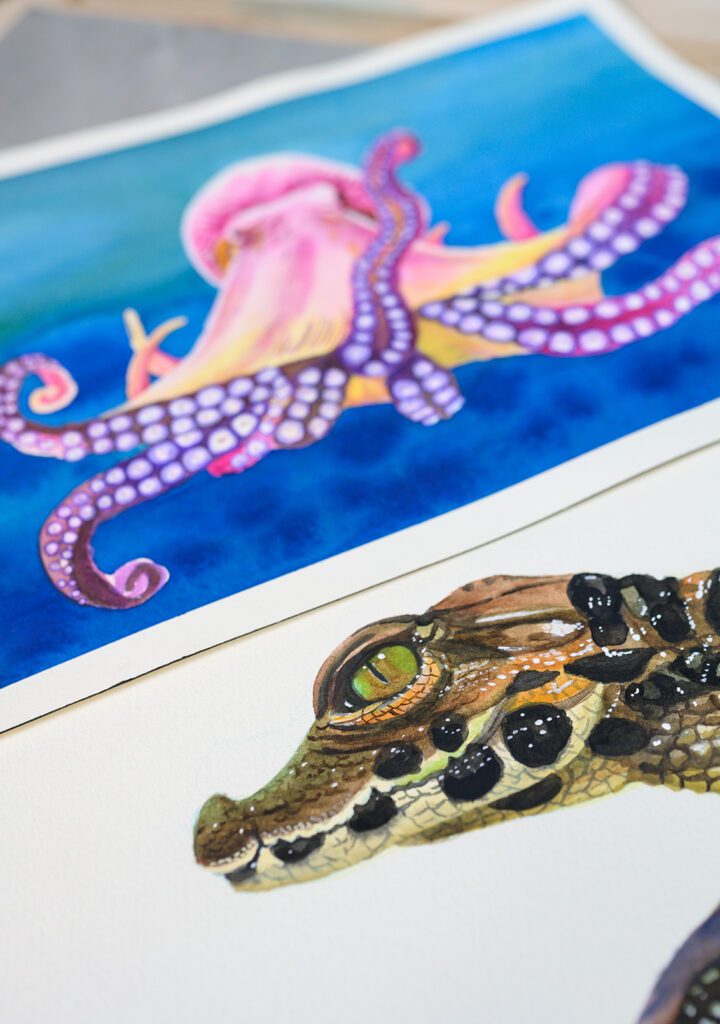
Artist Kourtney Zimmerman creates custom watercolor hues for creative customers around the country
When the German Renaissance artist Albrecht Dürer set out to paint his famously photorealistic “Young Hare” at the start of the 16th century—and with watercolors no less, a medium used mainly for draftwork at this time in the west—he did not begin, as most artists would today, with a trip to the nearest craft store for some tubes of Winsor & Newton. Instead, for the plush, earthen tones of fur and whiskers and velvety ears, he ventured, most likely, to the apothecary, where he purchased bottles of plant and mineral pigments to be mixed in his studio with gum arabic or other binding materials, a process requiring quite a bit of chemistry from his kin of plague-age creatives.
These days, the accessibility of watercolor paints has changed dramatically, but the process behind their creation has largely remained faithful to its age-old roots. For Baton Rouge-based artist Kourtney Zimmerman, a love for the medium has even turned into an exciting side business, with her Etsy shop Kourtney Paints—as well as her stall of original paintings at the MidCity Makers Market—racking up repeat customers who value the novelty of handmade, hand-poured colors unavailable anywhere else.
“I went to college to study graphic design, so I took art classes and did a lot of oil painting, and then moved to acrylics,” says Zimmerman, who works full time as a creative director. “When I started painting background scenes from Studio Ghibli movies as a hobby, usually with gouache—which is a medium like watercolor, but more opaque—it opened up the gateway to focusing mainly on watercolors themselves.”

Naturally, she began watching YouTube videos of her favorite artists at work, studying their different techniques and styles, and eventually discovered that many of them were creating their own palettes of specialty colors. Intrigued, Zimmerman decided to try it out herself, purchasing a large glass mixing slab, a special paint muller, and pigments from local shop Mo’s Art Supply to see what magic might erupt from these medieval-looking powders.
“It’s definitely a process of trial and error,” she says. “Different pigments react differently to your binder, with some being more hydrophobic than others, for example, which makes creating each color a slightly different process every time.”
The process can become almost a practice in mediation, she says, though Zimmerman often chooses to listen to audiobooks or watch YouTube videos while mixing and pouring her colors into small plastic pans for easy use. As a result, many of her collections’ color schemes take inspiration from elements of the pop culture she absorbs, from contemporary Marvel superheroes to the nostalgia of the Japanese comic book series Sailor Moon and beyond. The precise yellow of “Hufflepuff” and the stellar violet of “T’Challa,” I’m afraid, are as of yet unheard of in any store-bought box of art supplies.
“I was actually really surprised at how many ideas hadn’t been tapped into yet,” says Zimmerman. “I thought for sure that someone would have already made a collection of Sailor Moon-inspired paints, for example, but no one had, so I jumped on that myself!”
But Zimmerman doesn’t just consider colors when she creates her custom palettes. Texture and workability play just as important a role, especially when considering which customers might be drawn to certain themes.
“I figured that people interested in using paints named for Sailor Moon would be people who maybe used watercolors mostly for quirky crafts or lettering, who would have fun with a light wash and sparkle from natural pigments,” she says. “Collections inspired by Wes Anderson, on the other hand, will be a bit more highbrow in tone, or at least come with different expectations. But my ideas come from all over—most recently I was really inspired by a family trip to Wisconsin, just sitting at the lakeside and appreciating the colors of nature there.”
Some paint-makers have even made a hobby of going “pigment hunting” in the real world, traversing mineral deposits in rocky places like Arizona to pluck the perfect sienna hue. The clay and mush of Louisiana, of course, makes this nearly impossible in our area of the country, but that doesn’t mean that Baton Rouge can’t maintain its own population of painters-in-the-making. Before COVID-19 shut down the former White Star Market on Government Street, Zimmerman taught watercolor painting classes there, elaborating on the same basic techniques that led her into the field in the first place.
“I definitely hope to start up my painting classes again soon,” says Zimmerman. “I’m currently looking at a space that has a good level of quiet and privacy that I think will be perfect for small groups, so I’m excited to see what happens.”
In the meantime, the Kourtney Paints Instagram page continues to churn out glimpses of the paint-making process in pacifying detail, as well as news about new collection drops and “grab bags” of randomized colors in her Etsy shop—a peek into how Zimmerman aims to perfect her product as well as her craft.
“There’s no secret technique, and all the information is out there to learn,” she says. “It’s just cool to be able to use my own colors in my work, or see other artists using them. I’ve still got so many new ideas, and I can’t wait to get them started.”
Follow Zimmerman’s work on Instagram at @kourtneypaints and at etsy.com/shop/Kourtneypaints.












